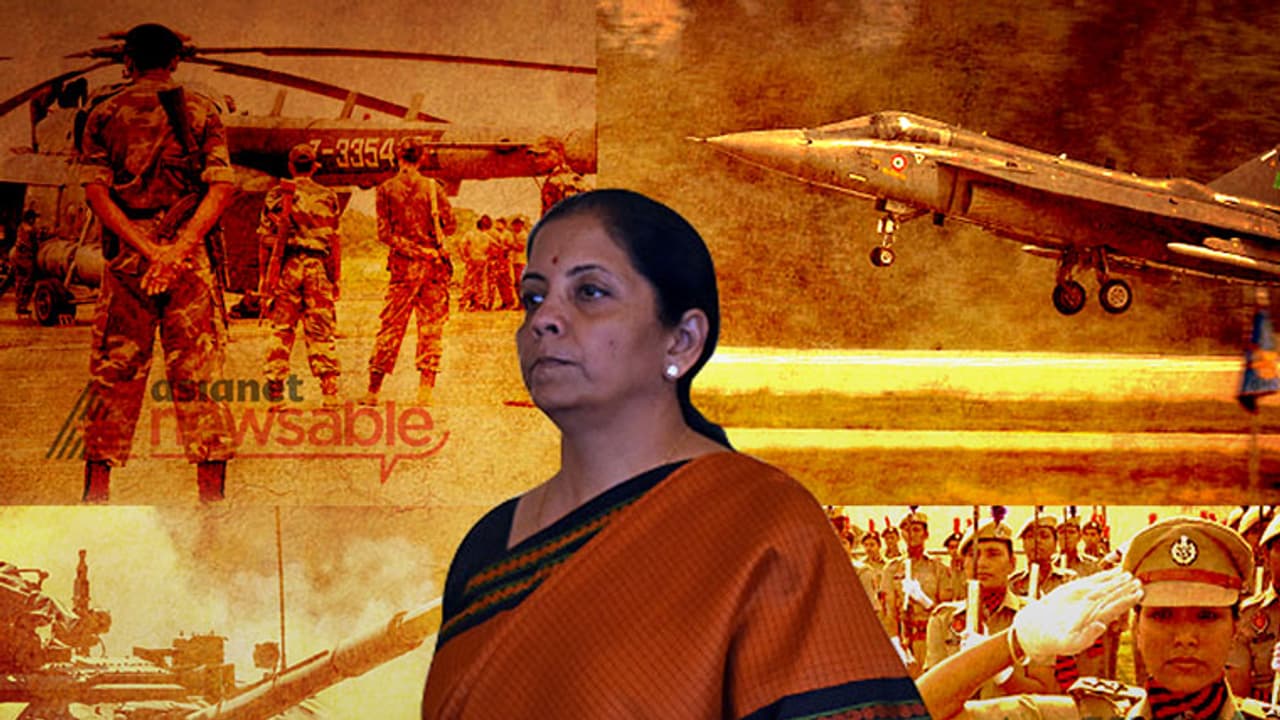India’s first full-time Woman defence minister - Nirmala Sitharaman - is assuming charge of an almost battle field like situation in the defence ministry that will call for skill and quick decision-making.

Her first challenge is raising the allocation for defence in the national budget.
At 1.3 percent of the GDP India simply does not spend money commensurate with her terrifying and complex threat perception. As seen in Doklam and through ceasefire violations by Pakistan on the LOC, Indian armed forces need to be on far greater vigil. This greater vigil translates into more tanks on longer patrol, more fighters flying more sorties and more warships at sea at a given point.
All this costs money, lots of it. The defence minister must take stapes to convince the Cabinet committee on security to hike the next budget for at least 2 percent of the GDP and a long term perspective spending of near 3 per cent of the GDP. Defense acquisition is another area of concern. While all services have some critical gaps - the Indian air force is the most in need. It needs to replace ageing fighter squadrons, quickly.
Its current strength of 32 squadrons, as against its requirement of 45 squadrons is a gaping hole which could be detrimental in a war situation. The acquisition of 36 Rafale fighters will boost Indian capability to launch offensives, but for a sustainable superiority vis a vis China and Pakistan India needs at least 200 single seat fighters that can fit into the make in India program – this decision will need to be made swiftly by Minister Sitharaman.
The Navy is down to just six submarines excluding the Russian nuclear-powered one on the lease. This mega Make in India project has been in the works for over twenty years and cannot wait.
Similarly, the Indian foot soldier is without an adequate number of modem rifles- a basic need. A recent rifle tender got cancelled because of a single vendor situation. New ways need to be devised to cut through the red tape and equip the soldier on the ground. A short war could otherwise cruelly expose some of these weaknesses that go unnoticed in peace time.
The second objective for her is to change the way of war fighting ingrained in the Indian armed forces since colonial times. Indian armed forces more or less fight independently of each other.
The air force, the Navy and the Army have very little experience of joint operations. The future of war will be all about jointness. However, there is deep set cultural resistance to the idea of jointness in the armed forces and it will take all her skills to bring about this change. Institutionalizing the change within the forces will be even a tougher challenge. India is way behind advanced nations on jointness – in the US for example; a joint chief of staff’s is the single point of reference between the armed forces and the President.
The new defence minister needs to take forward reforms of the Shekatkar Committee. India recently shut colonial era defence dairies and farms and outsourced transport requirements in peace stations to civilian service providers among other measures, thus cutting 57,000 non-officer rank troops. This will require hard decisions on man power as well as major spending on trucks, tanks and helicopters to boost mobility. India needs a leaner faster and technologically smarter armed force. It is a reform which cannot wait; China recently announced plans to cut 300,000 men from its armed forces.
Finally, there is an invisible malice facing the armed forces – morale. From food quality for soldiers to relations between officers and men, a myriad challenge of morale is sapping the Indian armed forces this will require a human touch. It will also require owning up to this big but not discussed issue within the military.
Finally, it will require a lot of money which brings us back to her first challenge- raising India’s defence spending.
Ninad D Sheth is a senior Delhi-based journalist. The views expressed in this article are his own.
